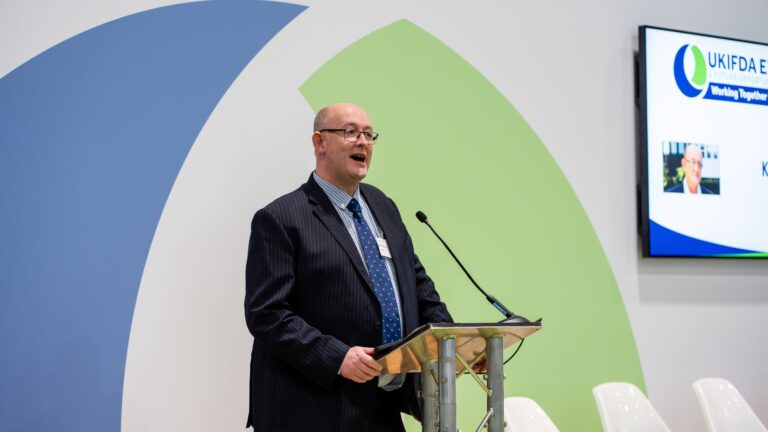
I would like to apologise to James Spencer of Portland Fuel for the title I suggested for his UKIFDA Show 2025 conference presentation—“The Impact of Donald Trump on the Market.” I suspect that the title will require a few revisions before May 14th.
When we came up with the slogan for our show and conference, it was intentionally framed to have multiple meanings and resonate differently with different people.
However, for me, what it isn’t is an acknowledgement that we were part of the problem.
Allow me to digress slightly.
A good number of years ago, I participated in a consumer study that examined attitudes toward energy, including its sources and the prices people were willing to pay.
During one of the focus groups, an elderly man, clearly frustrated with the conversation’s direction, said to the group, “You just don’t get it – I used to have to carry energy into our home.” This statement was met with silence and frowns. He was referring to coal, highlighting how we’ve lost sight of the fundamental understanding of how energy is delivered, with many consumers interacting with energy only through direct debits and emails.
I began my career working for one of the large utilities during the summer months. My principal role was to ensure that as many meters as possible were read on time—a challenging task in a large city like London, where many people were out at work during the day. This experience taught me the value of customer interaction. A meter reader going into people’s homes was essential for the company, as they could answer questions, check for vulnerabilities, and serve as an ambassador for the company.
Understanding customer preferences and demands
Fast forward 38 years, and I recently spent a few days in London meeting various politicians and civil servants, including the energy minister responsible for clean heat. I found myself alongside representatives from across the energy sector to discuss decarbonising rural heating.
It struck me that our sector is now one of the few that still interacts with customers face-to-face and is among the last to deliver energy directly to their homes. More importantly, our customers can see the energy they use and are acutely aware of its costs.
I couldn’t help myself – I felt compelled to share this perspective with the minister, emphasising how crucial it is for policymakers to consider this direct customer interaction.
A few days later, I returned home to find the April edition of Fuel Oil News awaiting me. It featured an article about our customers’ opinions on our industry and government policy, concluding with the sentence at the end of the article saying: “Understanding customer preferences and demands will be core to the industry as it moves forward through the energy transition.”
Looking back at that meeting, it is clear that our understanding and knowledge of what our customers want was far superior to the others present, who, sadly, now interact primarily through smart meters. This observation is not a criticism but rather a reality check.
So, being part of the solution starts with effectively communicating our customers’ needs and wants to policymakers. This is a unique advantage we possess.
A technology-neutral approach
A recent example from Scotland illustrates this point well. In announcing the government’s new strategic direction on heat in buildings, the minister acknowledged several factors, including a severe cost-of-living crisis, stating that it would be unaffordable for many property owners – particularly those in rural and island areas – to implement significant changes in the near future.
Consequently, the Government proposed a technology-neutral approach, recognising that different properties and people will require different solutions, clearly stating that clean heating solutions in some remote and rural areas may vary from those in urban settings, including the use of bioenergy.
It’s not often that I say this, but I commend the Government for listening to the industry and everyone involved in working with UKIFDA to achieve this outcome. This is, by far, the clearest demonstration of being part of the solution.
I hope you enjoy being part of the UKIFDA Show 2025!
Image credit: Ken Cronin, UKIFDA

